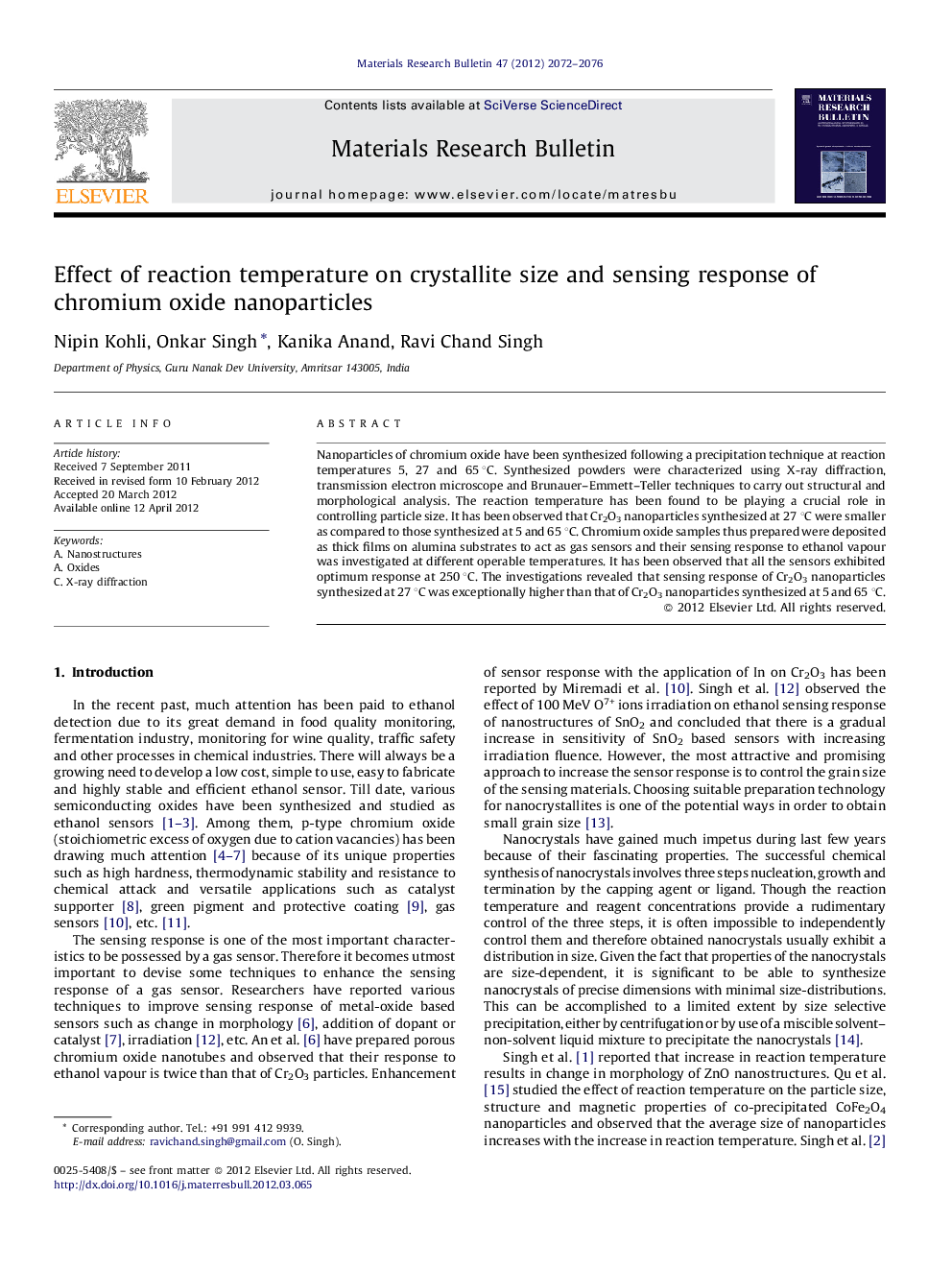| Article ID | Journal | Published Year | Pages | File Type |
|---|---|---|---|---|
| 1489990 | Materials Research Bulletin | 2012 | 5 Pages |
Nanoparticles of chromium oxide have been synthesized following a precipitation technique at reaction temperatures 5, 27 and 65 °C. Synthesized powders were characterized using X-ray diffraction, transmission electron microscope and Brunauer–Emmett–Teller techniques to carry out structural and morphological analysis. The reaction temperature has been found to be playing a crucial role in controlling particle size. It has been observed that Cr2O3 nanoparticles synthesized at 27 °C were smaller as compared to those synthesized at 5 and 65 °C. Chromium oxide samples thus prepared were deposited as thick films on alumina substrates to act as gas sensors and their sensing response to ethanol vapour was investigated at different operable temperatures. It has been observed that all the sensors exhibited optimum response at 250 °C. The investigations revealed that sensing response of Cr2O3 nanoparticles synthesized at 27 °C was exceptionally higher than that of Cr2O3 nanoparticles synthesized at 5 and 65 °C.
Graphical abstractSensing response towards 250 ppm ethanol for the samples synthesized at different reaction temperatures at different operating temperatures.Figure optionsDownload full-size imageDownload as PowerPoint slideHighlights► Effect of reaction temperature on particle size of Cr2O3. ► No catalyst has been incorporated to enhance the response of the material. ► Synthesis of Cr2O3 nanoparticles.
